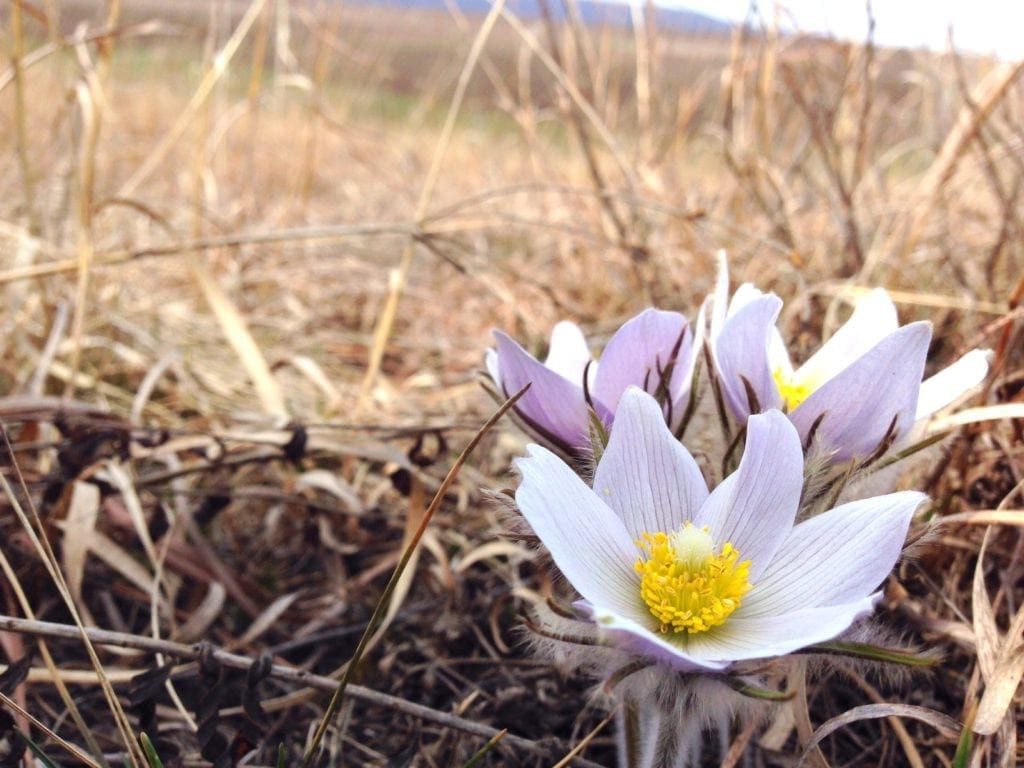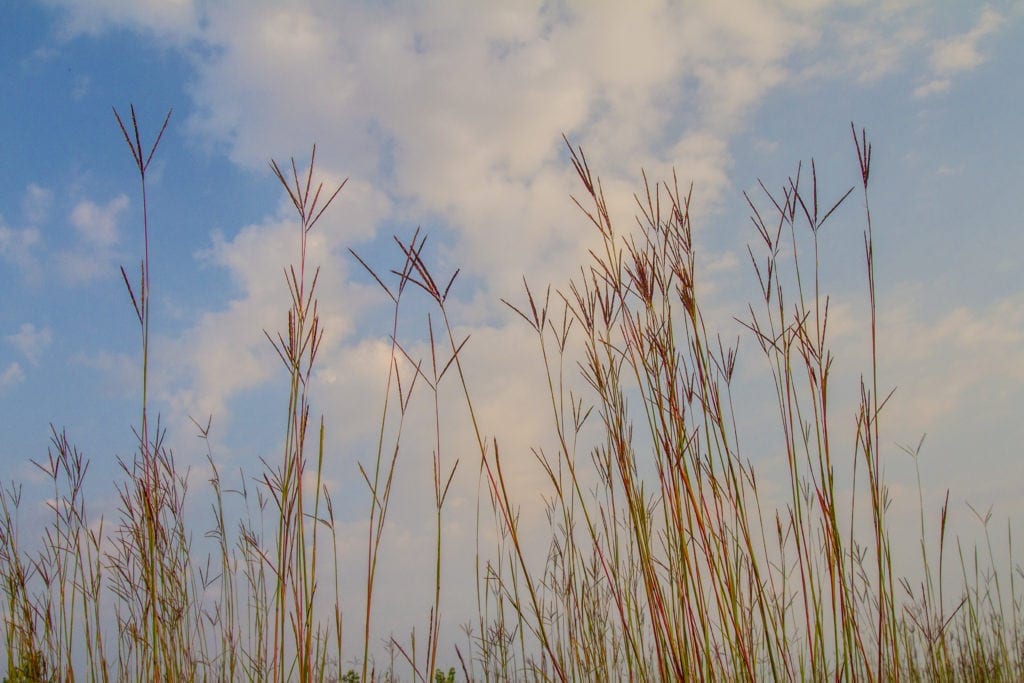When European settlers first arrived to the prairies of North America they found the grass was indeed greener on the other side, and bluer and redder and yellower—the prairie was painted with a palate of countless grasses and wildflowers.
The tall grass prairie originally extended from southern Manitoba to Texas, covering one million square kilometres. The Manitoban portion of the prairie was situated along the Red River Valley and covered six thousand square kilometres. Its immense area was rich with colourful wildflowers and towering grasses, like big bluestem (Andropogon gerardii), which can grow as tall as Manitoba’s 6 foot 8 Premier Brian Pallister. Today, less than one percent of Manitoba’s original six thousand remains.
The tall grass prairie once stood mighty and diverse in the middle of the continent, unlike the unsuspecting tawny fields you find today. The settlers didn’t see the value of the tall grass prairie, the plants of which were used by Indigenous people for ten thousand years for precious medicinal uses and food, so they plowed it away—the soil was fertile after all.
Beginning in the 19th century, the tall grass was cleared away for agricultural use. Despite the dramatic loss of tall grass prairie in Manitoba, there are pockets of the province that continue to look how they did pre-contact.
The Living Prairie Museum is a tall grass prairie preserve located in the west end of Winnipeg. Established in 1968, the museum is a safe haven for more than one hundred prairie plants found amongst winding walkways and grazing deer, which have made a home in the forests that surround the preserve.
The museum quickly became one of my favourite spots in my hometown. It serves as a venue for various events from its opening—coordinated with the first bloom of Manitoba’s provincial flower, the prairie crocus (Pulsatilla patens)—until the end of the season as marked by Thanksgiving.

Prairie crocus (bwinesett, Flickr, CC BY-ND 2.0)





